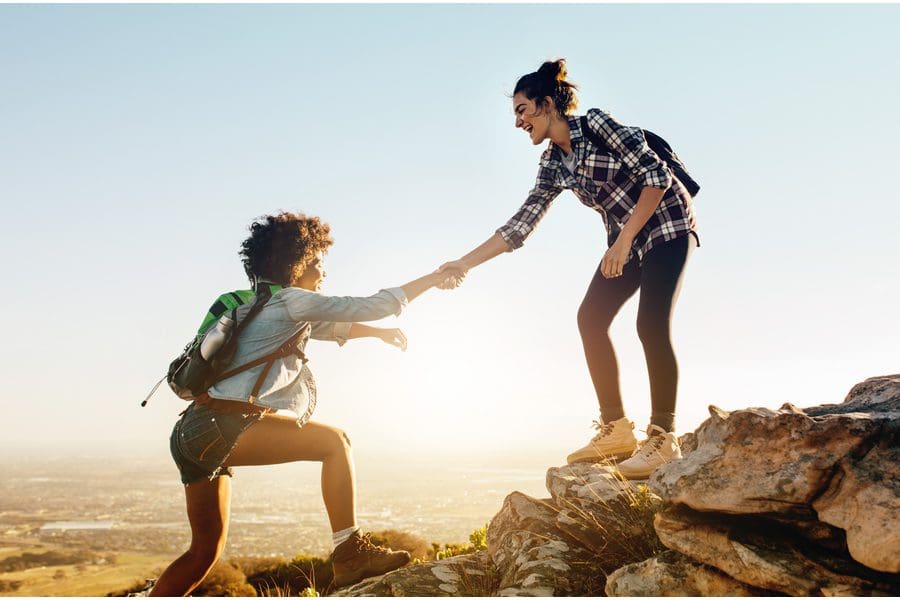Who doesn’t love a good hike? It’s a great way to get outside, get some fresh air and vitamin D, and become one with nature – even if it’s just for a little bit.
If you’re the outdoorsy type, you probably already have clothes for hiking, but id not, you may be wondering exactly what you should be wearing to hit the trails. That’s where we come in! Keep reading to learn what clothes to wear and what to avoid when getting ready for a hike.
These Boots Were Made for Walking?
It may be tempting to run out and buy the meanest-looking pair of hiking boots you can find, but before you do, know that you don’t have to wear actual hiking boots. The goal of a hiking shoe is to provide support, protection, and traction. That said, personal preference, weather, and trail terrain should also be taken into consideration.
Sneakers can be perfect for a hike as long as they have plenty of traction on the bottom. Another thing to consider is how quickly they dry, because hiking trails often aren’t without puddles or rain. If walking around with wet shoes would bother you, try to find a fast-drying sneaker. Of course, if you prefer extra support around your ankles or will be hiking on rough terrain, hiking boots are also an option.
Our picks:
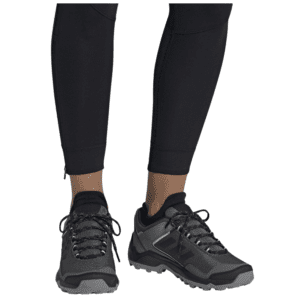
Adidas Terrex Eastrail Hiking Shoes ($69.99, shop here)
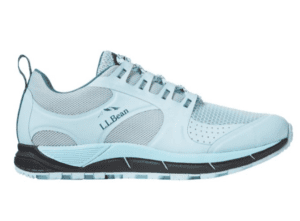
L.L.Bean North Peak Ventilated Trail Shoes ($109, shop here)
While you’re at it, don’t forget socks! Standard athletic socks are a great choice, especially if that’s what you’re most comfortable in, but you should also consider a pair that isn’t made of cotton. Why? Cotton absorbs sweat, so your socks will remain wet throughout your hike, which can cause blisters. Instead, you might want to opt for a pair of wool socks. Bonus tips: Make sure your socks hit above the top of your shoes to avoid pain and blisters.
Moisture-Wicking Shirts for the Win
The single most important thing to keep in mind when shopping for hiking clothing is to make sure your bottom layer is a moisture-wicking shirt, which simply means you’ll stay dry.
Once you have your wicking layer, move on to the next layer. This can be a short-sleeved tee that blocks UV rays or a long-sleeved tee to cover your arms and provide extra warmth. It all depends on where you’ll be hiking and what the weather will be like.
Our picks:

Lands’ End Moisture-Wicking UPF Sun Short-Sleeve Twist Hem Top ($39.95, shop here)
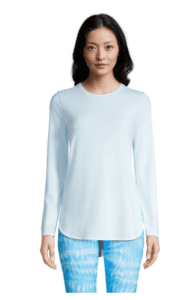
Lands’ End Moisture-Wicking UPF 50 Long-Sleeve Curved Hem Tunic ($44.95, shop here)
Multipurpose Pants
Alright, we’ve got our shoes, socks, and shirts – now let’s talk pants. The goal is to wear bottoms that give you plenty of flexibility while providing a decent protective layer against the elements.
The type of trail you’ll be hiking will ultimately determine what bottoms you should be wearing. For instance, if you’re going to be hiking somewhere with a lot of tall grass or bushes along the path, long pants will help keep unwanted pests from irritating your skin.
While zip-off pants went out of style many years ago, they are still popular among hikers because they allow you to start your hike in pants and end your hike in shorts as you warm up. Cargo pants are also popular among hikers because they provide space to store snacks or sunblock.
Our picks:
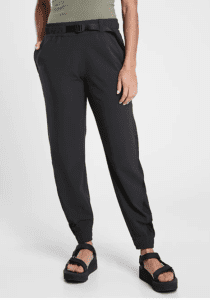
Athleta Quest Jogger ($109, shop here)
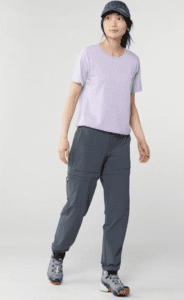
REI Co-Op Sahara Guide Convertible Pants ($89.95, shop here)
Rain Jacket
A rain jacket is optional, but it never hurts to put one in your backpack or tie one around your waist. Another benefit of having a rain jacket on hand is that you have an extra layer to block out wind chills if the wind picks up.
Our picks:
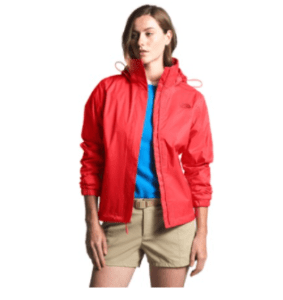
The North Face Resolve 2 Jacket ($90, shop here
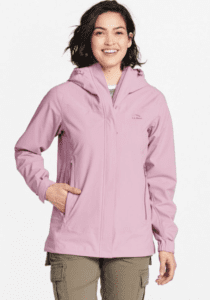
L.L.Bean Cresta Stretch Rain Jacket ($179, shop here)

